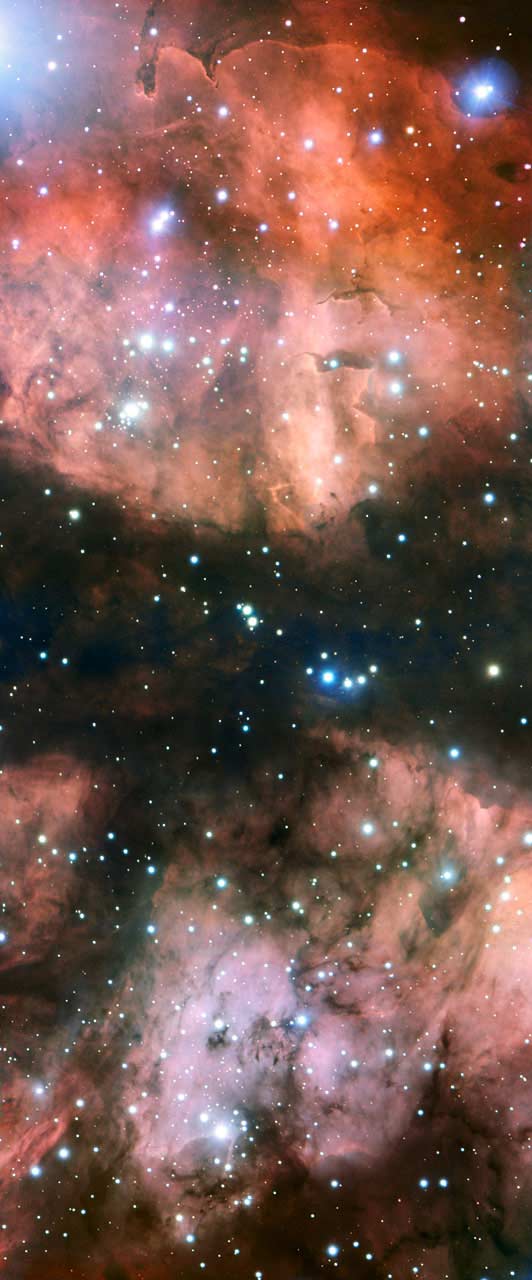Create a free profile to get unlimited access to exclusive videos, sweepstakes, and more!
Star birth in the Scorpion

We live in the outskirts of our disk-shaped galaxy, our Sun and planets located about halfway from the center to the edge. This is a bit like living a few kilometers away from a city, in the suburbs. From that distance, when you look toward the city, you see more buildings, more activity, just more stuff going on.
The same thing is true for us on Earth: the center of the galaxy (downtown) is located toward the constellations of Sagittarius and Scorpius, so when we look in that direction there's lots of fun things to see: more stars, more gas and dust, more clusters, more stellar nurseries.
And when you point the monster Very Large Telescopes ginormous 8 meter mirror in that direction you can see amazing details in that buzzing hubbub, like this lovely shot of the nebula NGC 6357:
[Click to ennebulanate, or grab the 3760 x 1560 pixel version. note: I rotated the image to make it fit the blog better and so you can see it more properly embiggened here.]
This piece is actually part of a much larger complex of gas and dust, but shows some nice features. The whole place is lousy with hydrogen gas, glowing rosy red due to energy pumped into it from young, massive, hot stars. Those stars are forming from that very gas, so they're lighting up their own nursery. Running right through the middle is a river of interstellar dust - not like the dust bunnies under your bed, this is actually more like soot, and made up of complex clumps of organic molecules. This dust absorbs and blocks light behind it, so it looks like it's splitting the gas cloud in half.
You can also see some structures in the dust, like the "fingers" of material at the top pointing to the center of the gas. Those are actually dense clumps of material being slowly blasted away by the fierce, intense ultraviolet light from newborn stars. Think of them like sandbars in a river getting eaten away by the current. They point right at the stars doing the deed, a cosmic "j'accuse!"
Nebulae like this are among my favorite objects in the sky. They're beautiful, they're fascinating, and it's more than a little mind-blowing to know that there are dozens, hundreds, maybe thousands of stars being born in these objects even as we watch. And it also gives me a bit of a shiver to know that these objects are ephemeral, too: the stars being born really are slowly eating away at the material... and many of these stars will explode as supernovae someday, and that destruction won't be slow anymore! The onslaught of high-energy radiation and material moving outwards from those stellar blasts at thousands of kilometers per second will make short work of this nebula. So take a look while you can. In a million years or four, this whole thing will be gone.
Related Posts:
- Cold fire threads Orion's belt
- The darkness and the light
- The closest supernova candidate?
- Desktop Project Part 26: Carina will keelhaul your brain



























